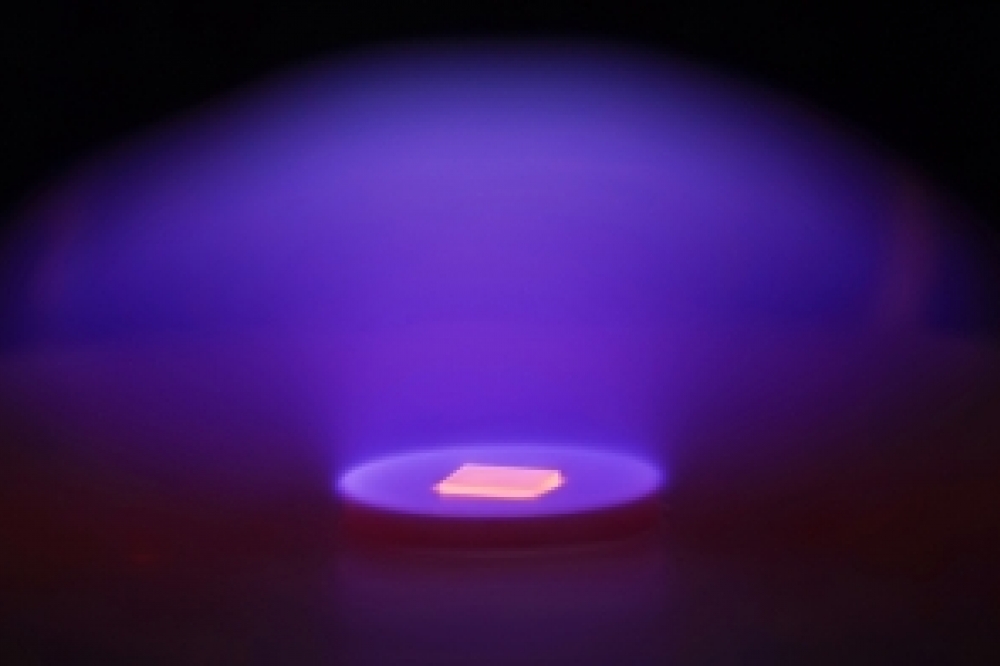Researchers to create power chips from diamond and BN

Arizona State University team is working with Northrop Grumman Mission Systems to make more efficient power transistors
Trevor Thornton, a professor of electrical engineering at Arizona State University, is working with an interdisciplinary team of colleagues at ASU and Northrop Grumman Mission Systems to research the use of diamond and boron nitride (BN) in power transistors.
Thornton’s team, which includes Terry Alford, a professor of materials science and engineering, Stephen Goodnick, a professor of electrical engineering, and Robert Nemanich, a Regents professor of physics, is conducting their research through ASU’s Advanced Materials, Processes, and Energy Devices Science and Technology Center (AMPED STC). AMPED’s goal is to develop materials and technologies with industry partners to support the mission of Arizona’s New Economy Initiative.
The New Economy Initiative aims to improve Arizona’s competitiveness in developing advanced technology. AMPED specifically looks to develop technologies and materials used in the construction of batteries, solar electricity generation and power electronics, which convert electricity to a needed form when it’s moved through transmission channels.
While diamond is the research team’s chosen material for the main body of a transistor, they are investigating the use of BN for the transistors’ electrical contacts. Like diamond, BN has a high breakdown field and high thermal conductivity.
The research team expects that by combining their knowledge of how diamond and BN work as transistor materials, they can create transistors made from both materials. The team’s hope is that the materials complement each other and work even better together than individually.
“Ultra-wide bandgap semiconductor materials like diamond and BN are expected to lead to more efficient energy conversion using less power with much smaller components,” Goodnick says. “This improves the future energy grid, which is essential for the ongoing transition toward renewable energy and electrification of the transportation sector.”
Better heat dissipation
This research has applications that would be especially useful to communications technologies. Many satellites run on solar power, which requires transistors to turn the electricity into a form usable by the satellite.
“You can’t launch a power substation into space,” Thornton says. “Any improvement on size and weight in a satellite has a huge impact.”
Another communications technology the transistors could improve is a bit closer to home: cell phone towers. Transistors convert power to the proper form needed to produce radio frequency waves that cellphones use.
Thornton says that one of the biggest challenges faced when designing and operating cellphone towers is keeping them cool. This is especially the case in a hot environment like Phoenix. Thanks to its improved heat dissipation, Thornton’s team expects transistors made from diamond and BN to greatly reduce the cooling power needed for cell towers. This makes the task of keeping cell towers from overheating far easier.
While the project with Northrop Grumman Mission Systems focuses on communications technology, transistors made from diamond and BN also have applications in power conversion for electrical systems and for the electricity grid. These more efficient materials could reduce the size requirements for electricity grid substations.
“If you wander around your neighborhood, sometimes there will be a big transformer surrounded by wires with signs warning you of death,” Thornton says. “That’s a substation. We’d like to make them smaller and more efficient.”
Nemanich, a faculty member in the ASU Department of Physics, leads a group conducting research on power electronics called the ULTRA Energy Frontier Research Center. He also leads a lab for growing artificial diamond material. These materials will be used by Thornton’s team in their research.
“We have been growing diamond for electronic devices for the last 10 years,” Nemanich says. “We believe our diamond deposition lab has unique capabilities for the development of electronic materials and devices.”
The transistor research project is funded for two years through the AMPED STC partnership with Northrop Grumman Mission Systems. However, to fully realise the transistors’ potential for widespread applications, Thornton says it could take longer.



































